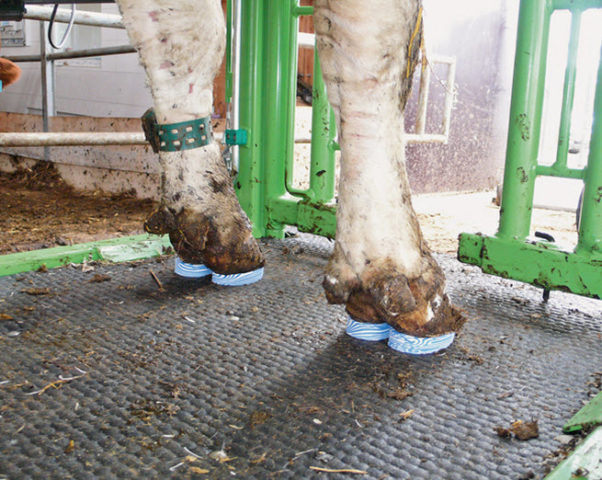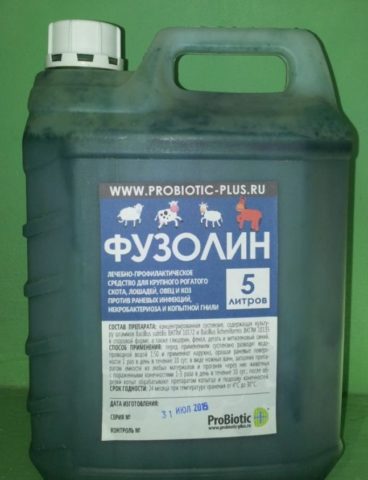Content
Hoof rot in cows is a common cause of lameness and a sign of poor quality livestock management. The disease is very difficult to treat, since the pathogen feels great in a dirty bedding, and the recovered animal has been a carrier of the bacterium for 4 years. As soon as the microorganisms “feel the slack”, the infection not only resumes, but also infects previously healthy livestock.
Causes of hoof rot in cattle
The causative agent of the disease is the anaerobic bacterium Fusiformis nodosus. It penetrates the hoof through scratches, cracks or punctures. Keeps well in a humid environment:
- manure;
- dirty litter;
- water-soaked pasture;
- curtained paddock.
The animals themselves infect the pasture, carrying the bacteria. The factor that provokes infection is a decrease in immunity.
In fact, the real reason for the appearance of hoof rot in cows is an unbalanced diet and poor housing conditions. It is worth the protective functions of the body to weaken due to a lack of vitamins, micro- or macroelements, so that the bacterium is activated.

Grazing on a waterlogged pasture often leads to disease of cows with hoof rot.
Symptoms of hoof rot in cows
Most owners do not pay enough attention to training the cow to show its hooves. Although animals need to trim their hoof horn every 6 weeks. If the cattle are accustomed to the fact that the owner looks after the hooves, he does not resist the inspection of the soles. Thanks to this, the appearance of hoof rot can be noticed in the early stages. But in most cases, the owner guesses about the problem when the cow has already begun to limp.
Early symptoms of hoof rot in cows include:
- softening of the sole;
- detachment of the lateral walls of the horn shoe;
- foci of wet erosion on the skin of the corolla;
- inflammation of the interdigital cleft;
- characteristic unpleasant odor from the hoof.
Sometimes it is possible to notice the initial stage of hoof rot only during the cutting off of the regrown horny shoe.
At moderate severity, the shoe begins to flake off from the heel side. A large part of the sole is peeling off. In the last stage, the shoe is completely detached from the base of the skin on the anterior wall and on the sole.
Lameness begins as soon as rot reaches the living part of the hoof. At the same time, sometimes outwardly the disease can be invisible. Only a small hole with a foul-smelling exudate indicates the site of infection.
In the photo below, a severe stage of hoof rot in a cow:

At an advanced stage of the disease, the animal actually walks on live meat.
Diagnosis of the disease
The symptoms of hoof rot are similar to other hoof diseases:
- necrobacteriosis;
- pododermatitis;
- inflammation of the interdigital cleft;
- hint;
- aseptic dermatitis;
- foot and mouth disease.
Hoof rot wounds are often infected with other bacteria. In this case, the disease proceeds as a mixed infection.
Diagnostics is carried out in laboratory conditions by inoculation of samples. On the spot, only a presumptive diagnosis can be made.However, many hoof infections are treated with similar treatments, so you can start fighting hoof rot without waiting for test results. The therapy can always be corrected later.
How to cure hoof rot in a cow
It takes a long time and tedious to treat hoof rot in cows using old "folk" methods. But even today these methods are popular due to the low cost of medicinal ingredients:
- tar;
- creolin;
- potassium permanganate;
- copper sulfate;
- iodoform;
- copper sulfate;
- formalin;
- zinc sulfate.
All these drugs have more than just antibacterial properties. They dry out wet areas of the hoof. The use of these funds and their mixtures is justified, since new effective drugs most often represent a complex composition of these ingredients. Sometimes with the addition of antibiotics. When using "clean" preparations of the "old" therapy, cows must be kept exclusively on dry bedding, which is technically impossible. And this is a minus of this method of treatment.
Antibiotics are recommended. But injections or oral medication only act on a secondary infection. The hoof rot bacterium is anaerobic. This means that it does not come into contact with blood, which carries oxygen and antibiotics. The habitat of Fusiformis nodosus is already dead. Influence on the causative agent of the disease can only be "outside". Most often, hoof rot is cured even without the use of antibacterial agents.
Preparing the hoof for treatment
Before applying any drug, the dead parts of the hoof are cut off as much as possible. Sometimes you have to cut before bleeding occurs. To trim the hooves of a cow, use:
- hoof knife;
- ticks;
- sometimes a grinder.
To use the latter, you need to have experience and a special circle.
The skin between the fingers is washed well with soap and water. The scabs are removed.

Bleeding is not uncommon when treating hoof rot in cows
Using old products
For treatment, almost all drugs are used undiluted. Tar and creolin are liquid fractions. They lubricate all the affected areas. The main effect of these substances is drying. They do not kill bacteria.
Copper sulfate is poisonous, so the powder is used in the case of deep holes in the hoof. It is impossible to apply pure copper sulfate to the bloody areas of the hoof. The same applies to zinc sulfate and formalin. For the treatment of skin and wound surfaces, 10% solutions are used.
A tampon is placed between the fingers. If there is a deep wound in the hoof that needs filling, it is also tamponed. The entire hoof is covered with a tight bandage.

An advanced version of the bandage: insulating plastic "horseshoes", not suitable if the skin above the sole is also damaged
New drugs
Technically, their application is the same as when processing hooves with "folk" means. But the new drugs contain the same ingredients. They can be in different concentrations and shapes.
"Fuzolin" is produced in the form of a suspension. Its composition:
- probiotic based on hay bacillus Bacillus subtilis;
- probiotic based on mesophilic soil bacteria Bacillus licheniformis;
- glycerol;
- phenol;
- tar;
- methylene blue.
The last ingredients of "Fusolin" belong to the usual means of fighting hoof rot, which have been used "from time immemorial." The effectiveness of the drug can be provided by aerobic bacteria competing with anaerobic bacteria.
Concentrated suspension. To use it, it must be diluted according to the instructions. Fuzolin is also recommended for prophylactic use.

It is not known why, on most sites it is impossible to find the composition of the drug Fusolin, the manufacturer himself does not hide it
In the video below, the cow owner demonstrates the action of the Intra Top-Hoofs gel. Composition:
- aloe vera 5%;
- copper 4%;
- zinc 4%;
- substances that bind the whole complex into a single whole.
The manufacturer claims that the gel has good wound healing ability.Copper and zinc preparations are "traditional", that is, in a different form, they have also been used for a long time for the treatment of rot and necrobacteriosis in ungulates.
Antibiotic use
Effective for secondary infection of hooves with bacteria susceptible to antibacterial drugs. Since drugs are administered by injection, the secondary microflora must be aerobic.
For hoof rot, apply:
- Bicillin-5 intramuscularly, once in a dose of 40-50 thousand units per 1 kg of body weight.
- Biomycin subcutaneously in the form of a 10% emulsion at a dose of 0.6 ml per 1 kg of body weight. The preparation is diluted on semi-liquid sterile agar, 3% sterile glycerol solution or on normal horse serum. The dose required for the cow is administered in 6 ml doses at several points.
- Oxytetracycline.
For severe hoof rot, oxytetracycline and bicillin-5 are most effective. They have more than just antibacterial properties. These drugs stimulate the regeneration of the soft tissue of the hoof.
Forecast and prevention
With the initial form of hoof rot, the prognosis is favorable. The severe form often leads to the loss of the hoof shoe by the cow. In theory, this can be cured, but it will take about a year to grow a new horn. It is economically unprofitable. If the exposed bone gets infected, it will lead to sepsis. The second option to save a cow is surgery. Cut off the affected finger. But surgery is only possible if the cow's second hoof is healthy. With a severe form of rot, this is impossible. Conclusion: if the disease is started, the animal is handed over for meat. Losses can be avoided if preventive measures are taken.
Prophylaxis
Cows are bought only from well-to-do farms. Before accessing the general herd, the hooves are treated with a 10% solution of formalin or vitriol. If a sick animal is admitted, it is immediately isolated and treated until complete recovery.
A disinfection bath is arranged at the entrance to the barn. For filling, 10% solutions of copper sulfate, formalin or "Fuzolin" are used. It should be remembered that such baths do not cure hoof rot. They serve only for prevention. For private owners, this method may not be suitable.
Keeping the barn clean and dry is a must for any cattle owner. The task is not easy, but doable.
To maintain good immunity, cows are provided with a balanced diet and quality feed.
Another preventive measure available only to large farms is pasture reclamation. The rot bacterium cannot survive in relatively dry land, and grazing in spring becomes safe.
Conclusion
Hoof rot is ubiquitous in cows. Many livestock owners even believe that this is a necessary evil. But the disease can be successfully dealt with if you pay enough attention to the legs and conditions of the cow.








